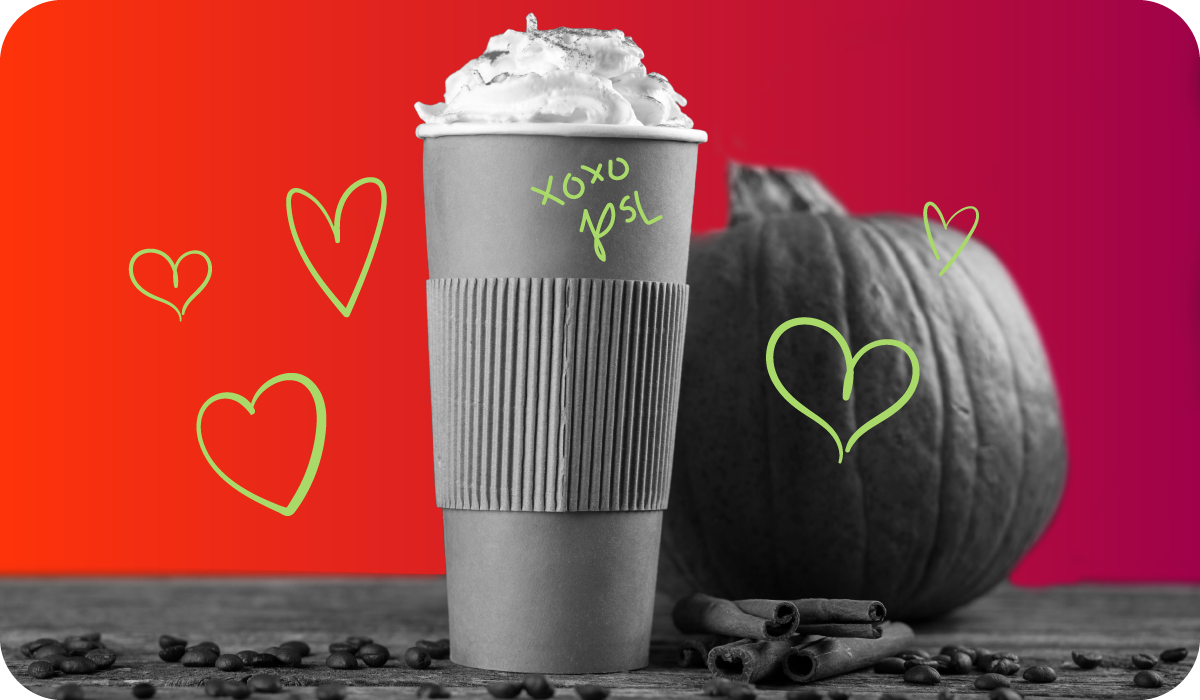PSL season: Can the cozy cultural landmark go international?
Industry Trends • Oct 23, 2025 9:00:00 AM • Written by: Kate Bunton

The pumpkin spice latte has proven itself to be much more than a seasonal beverage. It’s been the subject of much public discourse, as its annual advent represents not only the start of fall as an actual season, but a contemporary and distinctly American cultural energetic shift – the succession of one ephemeral season (or “szn”) after another: cozy season, spooky season, cuffing season, bulking season, et cetera, until we reach the familiar classic – holiday season.
We in North America know why we love it, or at least why we love to talk about it, but could it take on the rest of the world?
Starbucks first introduced the PSL (pumpkin spice latte) in 2003, and in the years since, pumpkin spice has evolved from a predictable seasonal flavor into a multi-billion-dollar cultural marker.
A harbinger for primetime autumnal marketing, the PSL has come to represent a lifestyle, and participating in the trend becomes more than conforming – sipping a PSL is part of leaning into the “immaculate fall vibes”.
The PSL industrial complex has become so prolific that it’s garnered faithful followers who count down the days until the drink and all its offshoots become available. And in equal measure, it also attracted a fair share of mockery for its perceived fussiness and frivolity and associations with a consumerist’s idea of the fall-time aesthetic, becoming categorized as part of “basic” culture. Even so, the truth of the matter is simple: the PSL is polarizing. It's beloved by many, and critiqued by some for promoting consumerist values, but everyone talks about it. In recent years, we’ve become more fatigued with the latter perspective, and the call to “let people enjoy things” has even those who side-eye the average PSL drinker leaning into seasonal fun.
While the PSL has become synonymous with “Fall culture” in the U.S., the question remains: could the pumpkin spice extended universe hold the same power abroad? How does a distinctly American seasonal trend translate across global markets? Can it even?
Pumpkin spice: more than a flavor
Pumpkin spice has transcended mere flavor status.
The rise of pumpkin spice coincides with the rise of “experience-based” consumption — where products are marketed with an energy of nostalgia, coziness, and the sense of participating in a larger trend as much as taste. Starbucks’ PSL became a seasonal ritual that brands across food, beauty, and home categories rushed to replicate. Competitors big and small, from Dunkin’ Donuts to neighborhood cafés, have created their own iterations of the drink practically by necessity to meet consumer demand.
The true impact:
- In 2023, the U.S. pumpkin spice market topped $800 million in annual sales.
- Other big-name brands like Oreos, Cheerios, and even Spam have released pumpkin spice editions.
- Psychologists studying the pumpkin spice boom note the flavor’s appeal is tied to “Autumn nostalgia” and the comforting predictability and sense of stability that comes with the changing of the seasons.
Autumn goes international
Pumpkin spice’s success is uneven outside North America, where the flavor lacks the same cultural and seasonal roots.
Despite the annual PSL launch date at Starbucks being August 22nd, to North Americans, pumpkins are associated with harvest time, Thanksgiving, and cozy domesticity. These cultural anchors are not shared in many other parts of the world – while Starbucks has introduced PSLs globally, the reception has been mixed, with some regions embracing the concept and others responding with indifference.
- In the UK, pumpkin spice is catching on among younger, social-media-savvy consumers, but still considered a “novelty.”
- In Japan, Starbucks limited PSL releases align with Western trends, but local seasonal flavors (like chestnut or sweet potato) continue to dominate.
- Australia’s reversed seasons make the timing of a fall marketing angle tricky – PSLs end up launching in spring weather.
Plus, search trends have shown that pumpkin spice spikes in the U.S. and Canada but stays relatively flat elsewhere.
Challenges facing international PSL success:
- Global adaptations: Some markets swap pumpkin for regional “comfort flavors.”
- Cultural mismatch: Autumn nostalgia doesn’t translate universally.
- Marketing challenge: Selling “cozy fall” in climates or cultures without that seasonality.
What we’ve learned from the pumpkin spice effect
The pumpkin spice story underscores that emotional marketing won’t always scale globally, but it can inspire local versions of “seasonal belonging.”
The PSL blueprint has proven majorly effective. It’s on limited-time offer, has aesthetic appeal, and evokes emotional nostalgia. Successful global brands localize the emotion behind the product rather than the product itself.
These marketing tactics are similarly used in Japan with their wildly popular limited-edition sakura (cherry blossom) products – their annual release signified the beginning of a new emotional season, one of new beginnings that celebrates local beauty.
@sugoimart No one is doing sakura like Starbucks Japan 🇯🇵 their Sakura Collection is their best one yet 🌸 link in bio to check it out ✨ #starbucksjapan #starbucks #sakura #cherryblossom #lifeinjapan #sugoimart ♬ Wonderful Day - Satria Petir
This kind of “seasonal storytelling” is tailor-made with all the necessary ingredients to foster serious hype where consumers live – which is on social media. Because of cultural bridges creating connection and a healthy dose of FOMO, these sorts of releases are photo-op approved, creating a renewable cycle of marketing that only builds on itself, triggering the creation of memes to “aesthetic” photoshoots.
@contispastryshoppe Let's be honest — we're all pumpkin spice latte fans at heart. 🤣 #pumpkinspice #latte #fyp ♬ original sound - Contis Pastry Shoppe
Branding experts understand: Cultural products succeed when they feel native to the emotional rhythm of local life.
Pumpkin spice is more than a seasonal fad – it’s a cultural mirror
In North America, it represents a lifestyle that recognizes and embraces the entrance into a new season to a level that’s practically polarizing – drinkers of PSLs are either extremely hype on their limited-time ability to purchase and consume, or they’re sipping one in a shadowy corner hoping to not be perceived as swept up in the awesome current of its “basic-ness” and “mainstream” popularity.
Abroad, it’s a case study in how marketing emotion travels (or doesn’t).
In this case, the PSL may never dominate globally, but its success story offers something better: a masterclass in building tradition through scarcity, storytelling, and sensory nostalgia.
Not sure if your idea will gel with international markets?
Kate Bunton
Kate is the Director of Operations at Orchard, working behind the scenes to ensure every client receives the best possible research results, no matter the subject or scale of the project at hand. With an extensive background in copywriting and content marketing, her experience in reaching and speaking to the everyday consumer helps drive the mission to solve the “say-do-gap” that plagues traditional market research through authentic engagement that meets people in a real-world context.
